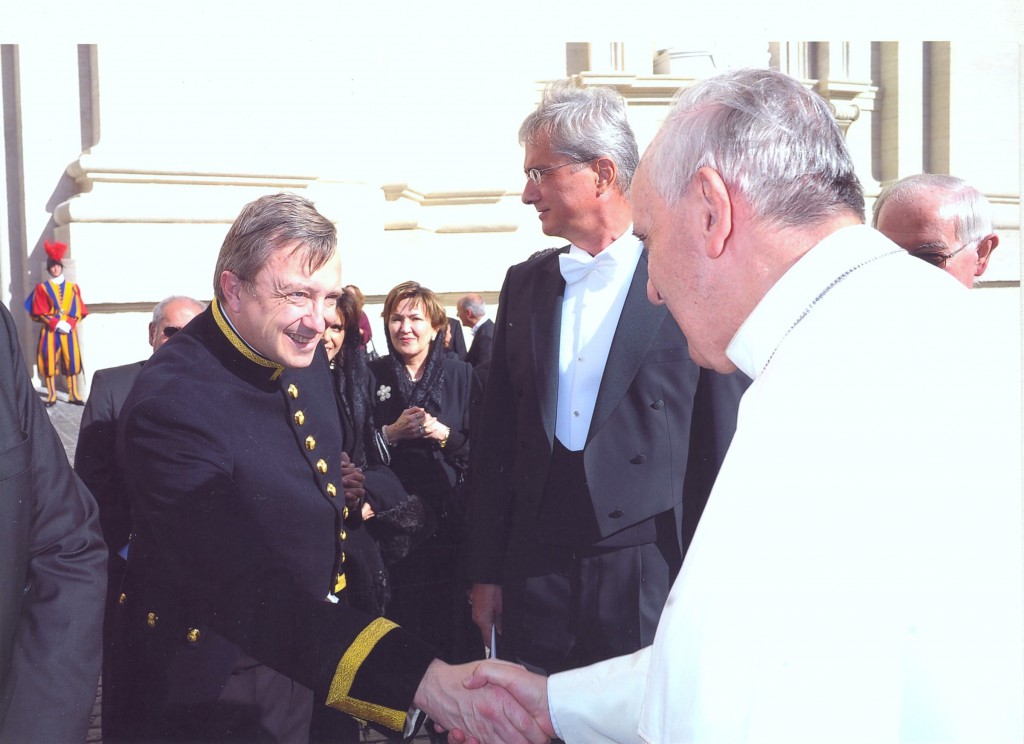3rd January 2014
Christmas and New Year at the Vatican

The following is a guest blog by Steve Townsend, Deputy Head of Mission at the British Embassy to the Holy See.

This has been my first Christmas and New Year at the Holy See. With services at St Peter’s Basilica on both Christmas Eve and New Year’s Day, and the Urbi et Orbi message on Christmas Day, as well as the Angelus on 23 and 29 December (the Feast of the Holy Family) and on New Year’s Day, there have been a large number of occasions for Pope Francis to address the faithful. Christmas has a special meaning for the Pontiff – his birthday is on 22 December, and he was christened on Christmas Day.
It is interesting comparing the various styles of the services over the period. The Christmas Eve Mass (televised by CNN – great publicity for the Catholic Church) and the New Year’s Day Mass were both solemn and formal, with serried ranks of cardinals and bishops, and the diplomatic corps in full uniform.
There was weight of ceremony in the services, with the liturgy and the music giving the sense of occasion and the dignity of tradition. Contrast them with the audiences for the Angelus and the General Audiences: these are informal, with much cheering and waving flags, with much of the sense of ceremony being submerged by the enthusiasm of the crowds. There are usually youth and school groups, trying to out-do each other in their celebration of the event.
All these events attracted large numbers. St Peter’s Basilica was packed on both occasions. The crowds for the General Audiences are usually well over the 100,000 mark, and it is estimated that over 6 million have attended Papal events in the Vatican in the nine months since Pope Francis was elected.
The audiences were mixed – there were the young and enthusiastic in the Basilica, and pilgrims of all ages and backgrounds in St Peter’s Square. This mixture of vibrancy and grounding is important. Any organisation, whether it is a religion, an institution or a large company, needs its sense of tradition and core values – what they stand for. Yet at the same time, it also needs the enthusiasm to drive itself forward, to face challenges as yet unforeseen.
2013 was a momentous year for the Holy See. Everything suggests that 2014 will definitely not be a boring one. There are many challenges, both external and internal, facing the Catholic Church and Pope Francis. It will be fascinating, and a privilege, to see how the story unfolds over the next twelve months.
What were you thinking of Steve? What a smile!
Very impressive uniform!
Cheers!
Wishing you all the best in 2014.